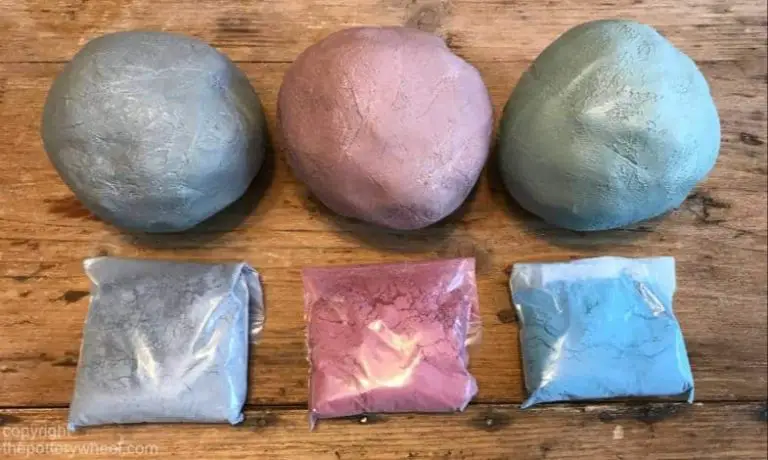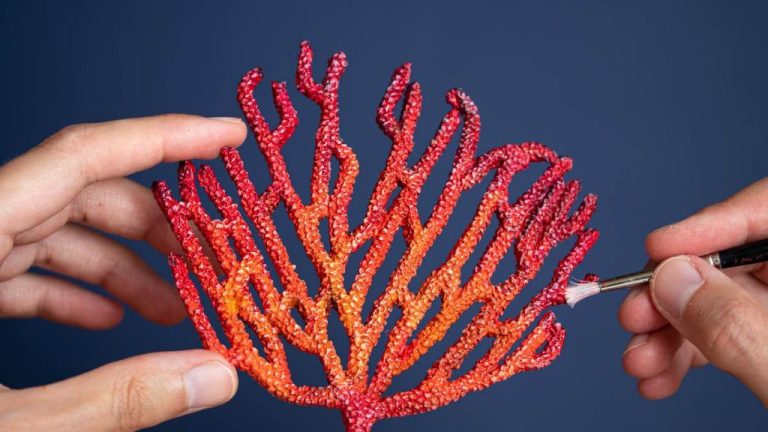What Is The Fastest Drying Clay?
Clay is a natural, earthy material made up of fine-grained minerals such as kaolinite, montmorillonite, and illite. It is moldable when wet and hardens when fired at high temperatures. Clay has many uses including pottery, sculpture, bricks, and architectural construction. Fast drying clay is desirable for several reasons:
– Allows projects to be completed more quickly. With fast dry clay, pieces can be worked on, dried, and finished in hours rather than days.
– Reduces the risk of cracking and warping. Slow drying can cause uneven shrinkage and cracks. Fast drying minimizes these risks.
– Enables quicker iterations and prototyping. Artists and designers can quickly test ideas, make revisions, and try new approaches.
– Allows clay pieces to be handled and worked on sooner. Fast drying means clay hardens quicker so additional layers and details can be added rapidly.
– Saves time and storage space. Without lengthy drying times, projects require less planning and dried pieces take up less room.
Types of Clays
There are several main types of clays used in pottery and ceramics:
-
Earthenware: This type of clay contains lots of iron and other minerals. It is porous when fired at lower temperatures. Earthenware clays include red clay, yellow clay, and brown clay. Earthenware tends to be soft, fragile, and absorbent.
-
Stoneware: This clay is fired at higher temperatures and becomes vitrified and watertight. Stoneware tends to be dense and heavy with low absorbency. It has a smooth surface and is durable. Some common stoneware clays are grey clay and white clay.
-
Porcelain: Porcelain is a very fine white clay that becomes translucent when fired at very high temperatures. It is fired at temperatures up to 1400°C. Porcelain is known for its strength, hardness, whiteness, translucency, and resonance.
-
Bone China: This type of porcelain contains bone ash added to make it extra white and translucent.
-
Ball Clay: A secondary clay added to improve plasticity and workability. Ball clays help ceramic and pottery shapes keep their form.
-
Fire Clay: A refractory clay that can withstand very high firing temperatures. Fire clays are used to line kilns and make fire bricks.
Drying Process
Clay dries through the process of evaporation. As water molecules on the surface of the clay are exposed to air, they absorb heat energy and convert from a liquid to a gas, escaping into the surrounding environment. This evaporation process continues as water molecules beneath the surface travel upwards to replace those lost at the surface until the clay achieves an equilibrium moisture content.
Several factors impact the rate of evaporation and overall drying time:
- Thickness – Thicker pieces of clay will take longer to fully dry as water molecules have farther to travel to reach the surface.
- Environment – Warmer temperatures and lower humidity will speed up evaporation. Colder temps and higher humidity will slow drying.
- Air Circulation – Moving air helps carry away evaporated water molecules, accelerating drying.
- Clay Composition – Clay bodies with higher grog or sand content tend to dry faster than pure clay.
- Surface Area – Clay dried in thick blocks will dry slower than if spread out in thin sheets or slabs.
Understanding the drying process and factors that affect evaporation allows potters to speed up or slow down drying times as needed for their projects.
Fastest Drying Clays
When evaluating clays for their drying time, some key factors to consider are the clay body, mineral content, grog content, and firing temperature. Here is a ranking of clays from fastest to slowest drying:
-
Midfire stoneware clays – These clays are formulated to have a higher grog content, allowing escaping water molecules room to move out quickly. They typically dry within a few hours.
-
Porcelain – The pure white clay body of porcelain allows it to dry faster than other clays. It can dry within 4-6 hours.
-
Terracotta – As an earthenware clay with a more porous composition, terracotta dries faster than stoneware. Expect drying within 6-12 hours.
-
Lowfire earthenware – The open clay body helps remove moisture but lower mineral content causes slower drying than terracotta. May take 12-24 hours to dry.
-
Lowfire stoneware – Denser and less porous than earthenware, lowfire stoneware dries slower. Allow 24-48 hours for thorough drying.
The fastest drying clays tend to be midfire stoneware and porcelain. Opting for these clay bodies will allow projects to be handled and fired sooner.
Tips for Fast Drying
There are several techniques you can use to speed up the drying process for clay:
Thinning the clay: Using slip (liquid clay) to thin down thicker clay will allow it to dry faster by decreasing the amount of material that needs to dry. Aim for the consistency of heavy cream.
Using clay dryers: Adding 2-3% of a drying agent like borate or Darvan to your clay body recipe will significantly cut down on drying time. These work by allowing water to evaporate more readily from the clay.
Heating: Placing wet clay pieces in a warm area like near a heat source or in direct sunlight will help the water evaporate faster. You can also use a fan, hairdryer on low setting, or food dehydrator to gently warm the clay and circulate air.
Increasing air exposure: Allowing air to reach all surfaces of the clay will promote even drying. Avoid letting pieces touch each other or rest on non-porous surfaces.
Promoting Even Drying
When working with fast drying clays, it’s important to promote even drying throughout the piece to avoid cracking and warping. Here are some tips:
Control thickness – Avoid thick and thin areas in your clay pieces. Slabs and sections should be as close to a uniform thickness as possible. This allows moisture to evaporate at an even rate throughout the piece.
Control environment – Dry fast clay pieces in an environment with stable temperature and humidity levels. Avoid drafty areas or direct sunlight which could cause uneven drying. Consider using a dedicated drying box to control the environment.
Rotate pieces as they dry to expose all sides equally. Wrapping pieces in plastic can slow outer drying and allow interior moisture to catch up.
Pay close attention in the final stages of drying to look for warping or cracks beginning to form. Some minor warping can be corrected by gently bending the piece in the opposite direction.
Uses for Fast Dry Clays
Fast drying clays are useful for a variety of projects that require pieces to be handled or worked on quickly after molding. The rapid dry time allows the clay pieces to gain strength rapidly so they can be handled without deforming. This can help speed up production and allow for faster project turnaround.
Some examples of uses for fast dry clays include:
- Pottery production – Fast dry clay enables ceramic artists to handle and decorate greenware faster after pieces are thrown or molded.
- Crafts – For craft projects like ornaments, jewelry, figurines and more, fast dry clays allow crafters to complete and assemble their creations quickly.
- Prototyping – The ability to handle pieces soon after molding makes fast dry clays useful for mock ups and design prototyping.
- Education – In classroom settings, fast dry clays enable students to complete clay projects within a single class period or session.
Overall, the rapid dry time of these clays makes them ideal for any application where the ability to handle pieces soon after molding can speed up production and project turnaround.
Downsides of Fast Drying
While fast drying clays offer advantages in speed of production, they also come with some downsides to be aware of. The quick drying process can lead to increased brittleness and breakage.
As fast drying clays lose moisture rapidly, they have less overall workability than slower drying clays. The narrow window for working with fast drying clays before they begin to harden can make sculpting and shaping more challenging. Pieces may crack or break if handled when too dry.
It’s important to work swiftly when using fast drying clays and keep them moist. The fast drying also provides less time for smoothing and refining the surface. Slower drying clays allow more meticulous detailing and texture work before hardening.
Fast drying clays like polymer clay can be conditioned with oil or plasticizer to slightly extend the workable time. But in general, the quick dry nature requires efficiency and speed when sculpting to avoid cracking and breakage.
Best Practices
When working with fast-drying clays, following some best practices can help maximize the benefits while avoiding potential downsides.
First, keep the clay properly sealed and stored so it does not dry out prematurely. Fast-drying clays can harden quickly when exposed to air, so keeping them tightly wrapped until ready to use is important.
Prepare your workspace by covering surfaces with plastic, paper, or cloth. Fast-drying clays can permanently stain porous surfaces like wood or fabric if spilled while wet. Having protected surfaces makes clean up much easier.
Work quickly and decisively when shaping fast-drying clays. They set up rapidly, so having a plan for what you want to sculpt or model is key. Avoid overworking or attempting major changes once the clay begins to stiffen.
Use clay softeners and flow improvers sparingly. While these products can provide extra working time, overuse may inhibit drying. Find a balance between flexibility and rapid setting.
Let pieces dry thoroughly before additional handling or firing. Fast-drying clays firm up quickly, but still require sufficient time to fully cure before moving to the next steps.
Follow all manufacturer recommendations for proper use, drying times, baking temperatures, and other instructions specific to the type of fast-drying clay you are working with.
Conclusion
In summary, the fastest drying clays are polymer clays, air dry clays, and quick-fire low temperature clays. Polymer clays like Sculpey and FIMO dry by a chemical reaction when exposed to air, making them extremely fast to harden. Air dry clays like Crayola Model Magic and Activa LaDoll also dry very quickly through evaporation. Low fire clays meant for firing at cone 06 like Amaco Velocity can be dried quickly in a low temperature kiln. Using these fast drying options allows crafters and artists to complete projects rapidly without extended wait times. However, fast drying clays can lead to cracking or uneven shrinking if care is not taken. Using consistent thicknesses, avoiding hollow forms, and promoting even drying can help mitigate these issues. Overall, polymer clays, air dry clays, and low temperature clays offer the fastest route to completed clay projects.



